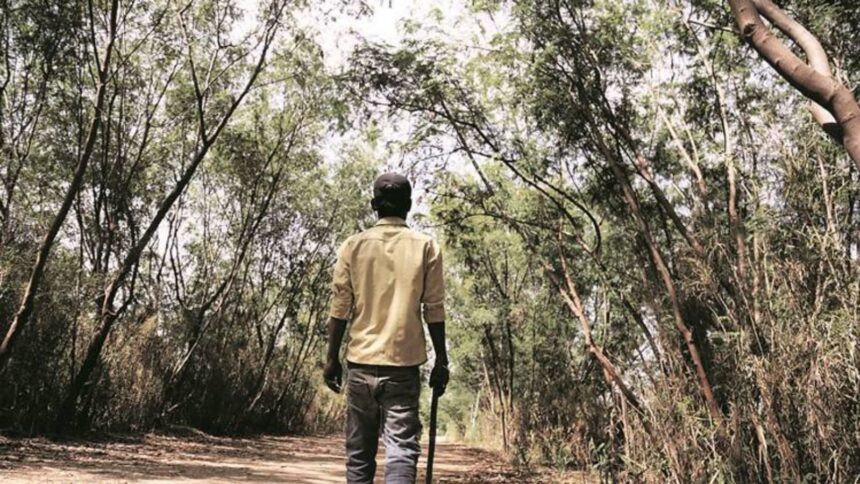A machine learning algorithm developed by an Indian Forest Service officer and powered by satellite images. That’s what the Madhya Pradesh forest department plans to deploy as part of its ambitious push to use an Artificial Intelligence alert system to fight deforestation.
Developed by the Guna Divisional Forest officer (DFO) Akshaya Rathore, an alumnus of IIT Roorkee, with some help from Chat GPT, the Real-Time Forest Alert System is being rolled out as a pilot project in Shivpuri, Guna, Vidisha, Burhanpur, and Khandwa – all districts with the highest reported cases of illegal felling and encroachment – this year. A cloud-based system, it integrates satellite data, machine learning algorithms, and real-time field feedback to monitor forest areas with unprecedented precision.
Capable of detecting changes in areas as small as 10×10 meters, the system instantly alerts DFOs when activities like crop cultivation, construction, or land use alterations occur in forested regions. These alerts trigger immediate instructions to beat guards for on-ground verification, ensuring action to curb illegal activities.
Significantly, this is the first time that the state is using AI to fight deforestation. According to the 2023 report by the Forest Survey of India, Madhya Pradesh has the largest forest and tree cover at 85,724 sq km but also reported the highest loss of forest land at about 612.41 sq km.
According to Rathor, he set to work on the project after he “witnessed the impact of climate change on the ground, which fuelled my passion”.
“My research on AI, including published papers, inspired this project. A notable influence was my work on the Guna encroachment issue, where I developed a paper-based model and confirmed its feasibility with sufficient data,” he said.
It was the fight over a piece of land between two communities around Diwali last year 2024 that inspired Rathore to begin working on an AI model. The dispute, according to the officer, led to the death of a community leader and eventually, arson.
“This tragedy highlighted the urgency of developing an AI-based solution for proactive land management,” he said.
Initially, forest monitoring relied on manual methods and ground-level confirmation.
“To improve accuracy, I introduced the dynamic AI model. I wrote the basic alert generation code using Python, leveraging my field experience. While I used ChatGPT to assist with scripting, I designed the core architecture myself, as Python required specific adaptations for tablet-based deployment,” he said.
To come up with his mechanism, he studied a similar alert-based system in Karnataka.
“Our AI system aims to generate alerts every 2-3 days, a significant improvement over Karnataka’s 21-day alert frequency model,” he said. “Before the monsoon, we plan to establish a comprehensive database to fully train the model. Once the system achieves a 99 percent success rate, it will function as a predictive tool for land and resource management, identifying illegal activities (e.g., felling, encroachment, grass, and water management), optimizing allocation and manpower deployment”.
The current system ensures staff accountability by requiring photo uploads from within alert zones. However, full automation in Phase 2 will reduce human dependency.
“We hope to introduce drones which will take over human tasks. The database must be expanded to include year-wise data for robust time-series modelling, minimising errors from seasonal variations,” the DFO said.








